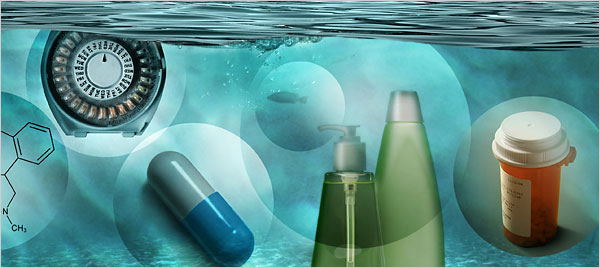An Introduction to Regulated Medical Waste
Think about the last time you went to a hospital. Did you ever notice the plethora of trash cans, sharps containers, and special waste bins? Have you ever thought about how much waste is generated by our hospitals? Well, it turns out that our nation’s hospitals generate approximately 6,600 tons of waste per day! That’s a little over 2.49 MILLION tons a year! Surprising isn’t it? Contrary to what many believe, most medical waste isn’t infectious or dangerous at all. As a matter of fact, approximately 80% of that solid waste is non-hazardous, and like most solid non-hazardous waste, it can be recycled, composted, or diverted from a landfill or incineration. Regulated medical waste, on the other hand, must be disposed of properly for the safety of society.
So what is regulated medical waste?
According to the EPA, the Medical Waste tracking Act of 1988 defines medical waste as “any solid waste that is generated in the diagnosis, treatment, or immunization of human beings or animals, in research pertaining thereto, or in the production or testing of biologicals.”
A simpler way of thinking about it is that regulated medical waste is anything contaminated by blood, body fluids or other potentially infectious materials that poses a risk of transmitting infections.
Regulated medical waste must be disposed of in certain ways. And for most hospitals, that translates to incineration. However, the problem is that a lot of the waste that ends up in incinerators shouldn’t be there in the first place. Studies show that of all the waste generated by hospitals, no more than 15% should theoretically be RMW. Sadly, many hospitals are ending up with a lot more than that.
Incineration sounds safe–what’s the big deal?
Incineration might destroy the potentially harmful agents in RMW, but it’s at a tremendous cost (both financially and environmentally). Not only does disposal of RMW costs hospitals up to 10 times the amount compared to “normal” waste, it also produces toxic air emissions, toxic ash residue, and creates novel toxic compounds. Thsee air emissions affect local communities and may even affect those hundreds, if not thousands of miles away, while Ash residue ends up in landfills where the pollutants can leach into the groundwater. Even worse, burning of RMW can create novel toxic compounds such as dioxins which have been classified by the International Agency for Research on Cancer (IARC), an arm of the World Health Organization (WHO), as a known human carcinogen. In fact, the EPA identified medical waste incineration as the 3rd largest known source of dioxin in air emissions and a contributor of approximately 10% of the mercury emissions to the environment.
A brief aside on Dioxin:
Dioxin (the compound found in Agent Orange) is one of the most toxic chemicals known. Exposure in humans occurs through the ingestion of foods, mostly meat and dairy products. This happens when cattle and dairy cows eat feed crops that were contaminated by airborne dioxins that settle onto soil and plants. A scary thought is that dioxin has also been found to affect children in utero, and has been linked to birth defects, disrupted sexual development, and damage to the immune system.
If not incineration, then what alternatives?
Fortunately, the human endeavor to find alternative methods to incineration are ongoing, and some are already commercially available. I will only enumerate the different technologies below:
-
steam sterilization in autoclaves
-
post-treatment shredder or grinder
-
microwave treatment
-
alkaline hydrolysis
-
dry heat treatment
So what can we do to help minimize RMW?
As always, the best action is prevention through education. And that applies to waste as much as anything else. For healthcare professionals, that means understanding where waste is coming from and how it is being disposed. Organizations such as Practice Greenhealth have developed tools for health facilities to track their waste to better understand waste management practices. But tracking isn’t enough. Education is paramount. I have personally seen countless times staff throwing non-hazardous waste in hazardous waste bins. Does this mean that staff members don’t care about the environment? Of course not. It’s simply a reflection of the lack of education surrounding RMW. I was surprised to see that many physicians, nurses, and even custodial staff did not realize the impact of their actions.
Those not directly in healthcare can make a difference too. Next time you’re in a doctor’s office or a hospital and you see a staff member or other healthcare professional about to throw something non-hazardous into a hazardous bin, ask them about it. We are all stewards of the environment. We should all take the opportunity to teach and learn from each other. After all, those in healthcare are there for a reason–to help heal, and what better way to do that than to prevent the introduction of toxins into the environment.



